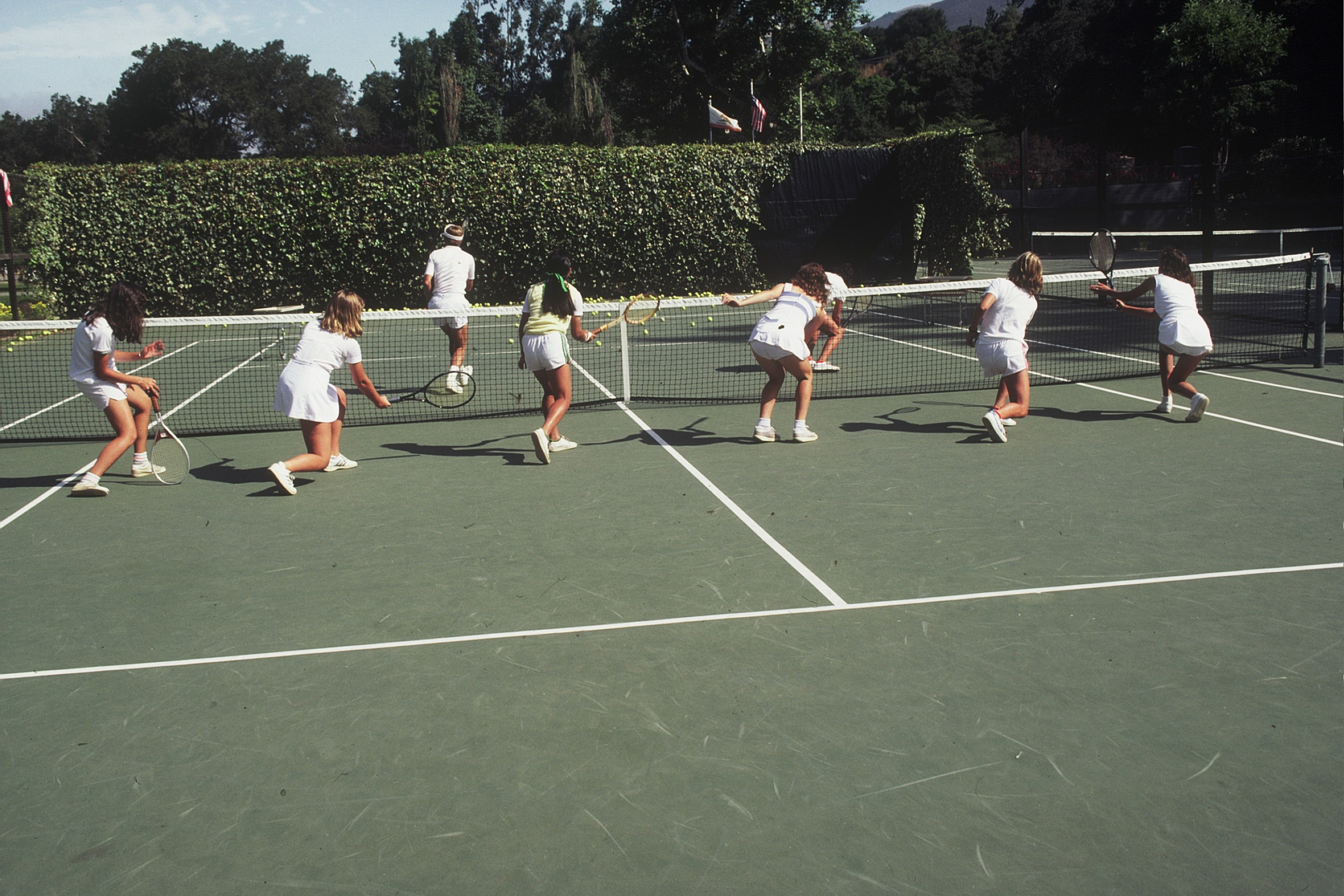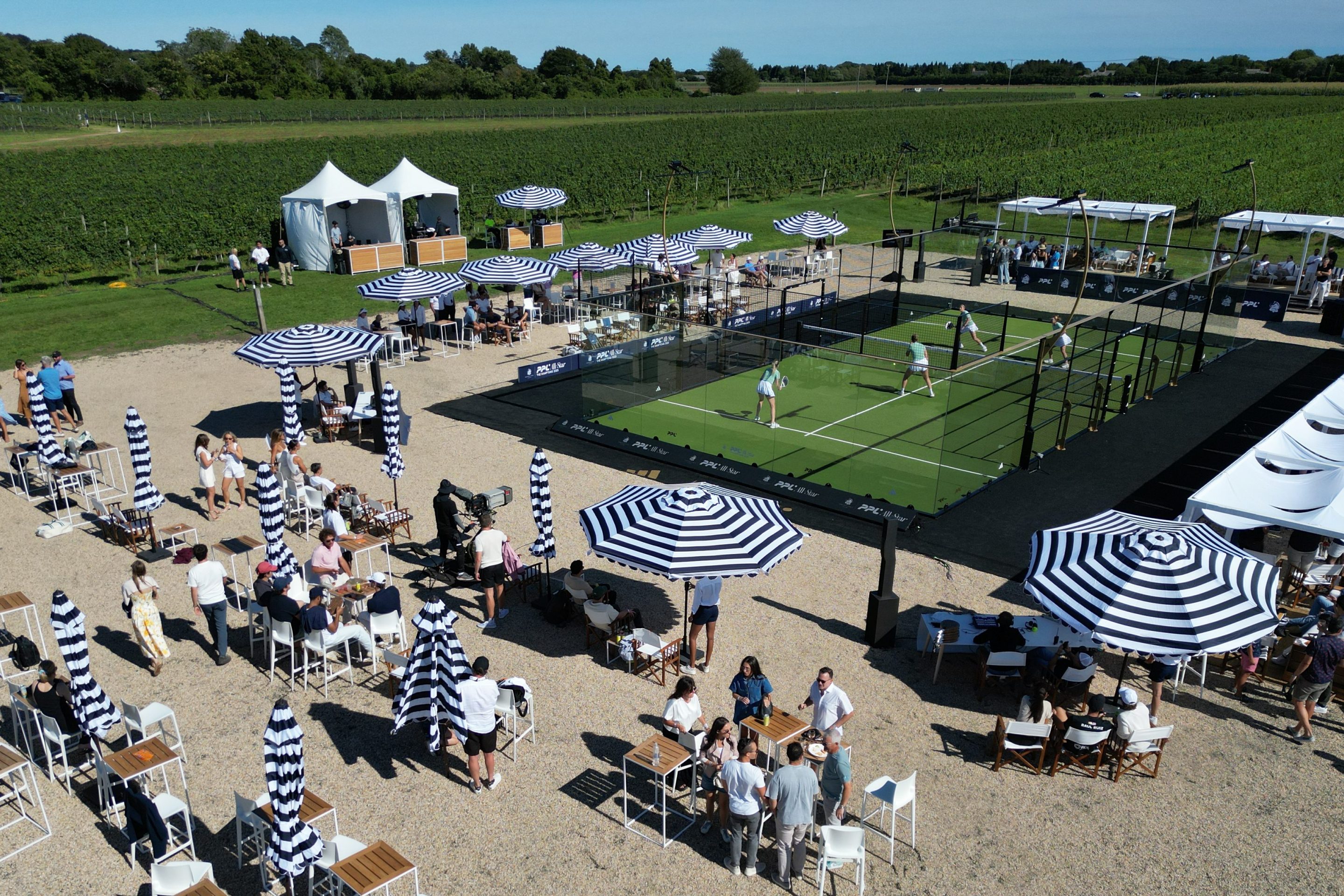When I started playing squash, I was an 8-year-old kid growing up in suburban Philadelphia. It was 1990, the first George Bush was president, and I played squash on dark, underground courts that were invariably freezing. The ball was hard as a rock. It was made of fuchsia rubber, and its bounce can only be described as aggressive; it flew off the walls like a tiny killer drone. If you accidentally hit your opponent you’d leave bruises that developed overnight into complex, multilayered bull’s-eyes, shiny white at the center surrounded by a ring of angry red, giving way to orbits of purple and green and bilious yellow.
I learned that the major winning shot was a “kill”: It involved slamming the ball hard and low, just over the tin strip at the bottom of the front wall. You could also win, I learned, on a shot called a “killer boast.” The coaching I received at tournament matches was somewhat gladiatorial. The basic mantra was to “move forward,” “get aggressive,” and “take the ball at the top of the bounce.” The aim was to end the point quickly. You had to “volley everything.” It was imperative to get in front of your opponent and “bury her in the back corner.”
That was the pugnacious racquet sport I started at 8 and soon began to play quite seriously, competing at the national level. When I won my first Junior National Championship I was 10, and I had no idea that the sport at which I’d begun to excel wasn’t actually squash, at least not in the international sense of the game. It was, in fact, American squash, or hardball, a heretical strain of the sport that was standardized in the U.S. and Canada in the confident postwar 1920s and played exactly nowhere else on the planet.
Though the game originated in England, it had spread to North America in the 19th century and picked up popularity as the decades passed. Around 1920, in an effort to consolidate the rules of the sport, court sizes in the U.S. were standardized at 18 and a half feet. At once, clubs up and down the East Coast began to construct their new courts according to official dimensions, so that squash enthusiasts could compete against one another on an even playing field.
From that point on, the sport began to grow in popularity, at least among East Coast elites. These early American players—like me as an 8-year-old child—believed that the game they were playing was squash. They rejoiced in their expertise at whacking that vengeful little red ball and moving around that rectangular court. They grew confident enough, in fact, that the United States Squash Rackets Association (USSRA) decided to invite the British national team overseas, hoping to beat them at their own sport.
It was during this tour, in 1923, that a startling discovery rocked the world of squash in the U.S. As soon as the British players arrived and unpacked their racquets, it became glaringly apparent that the two countries were playing completely incompatible sports.
The problems began with the ball. The English team played with a soft, black rubber ball, not that hard, fuchsia pellet. Their ball bounced heavily, slowly. It hung in the air for a long time, and for the most part you didn’t take it on the top of the bounce. Instead, you let it fall. You could cradle it with your racquet. Points lasted forever, nothing died. In the British version of the sport, you were less likely to attempt a killer boast than you were to caress a drop shot into the corner.
But the problems weren’t just limited to the squash ball. Everything about the British version was alien to the American players. The Brits played nine points per game; the Americans played up to 15. The strip of tin on their front wall, below which a shot is “out,” was higher than it was on American courts. The red lines on the walls were drawn differently. So were the lines on the floor. And, worst of all, the British court was a full two and a half feet wider than the 18-and-a-half-foot American court.
By the end of the tour, the sport of squash had been pitched into a full-blown international crisis. The resulting diplomatic machinations that emerged on both sides of the ocean read now as a farcically belated recapitulation of original colonial grievances. The British Tennis and Rackets Association formed subcommittees on getting American squash “into line.” The USSRA retaliated by demanding that the T&RA should at the very least raise the height of its tins. A compromise ball—a difficult-to-imagine hybrid of the soft, black ball and that fuchsia rock—was proposed at some point, but the Americans, perhaps feeling their new importance as a colonial power in their own right, were insistent that it was the British, not they, who should change their system of scoring, and narrow their courts, and basically “get into line” with their system.
Politely, the British T&RA declined the Americans’ invitation. What they played, they insisted, was squash. What the Americans played was something else altogether. Squash had originated, after all, at Harrow School. From there, it spread to the British colonies. Most colonies were fully “in line”: The Egyptians played with a softball, and so did the Indians and the Australians and the Malaysians. Why, then, the British squash community wondered, should they alter the sport just because a handful of Americans had accidentally redefined it?
But the Americans had already poured the concrete for their narrower courts. And they liked their vicious red ball. They liked hitting kills, getting aggressive, taking the ball on top

of the bounce, and burying their opponents in the back corner. For them, the British version was boring. In 1936, an American player called Willing Patterson wrote that “I recall many a rally in English matches I have played when in about the thirtieth or fortieth time the ball was struck I began to wonder whether we were going to have shepherd’s pie or pheasant for dinner, Rhine wine or champagne.” Squash, as played by the Brits, was a long game. Hardball was a short game. The Americans preferred playing that.
And so for seven decades, squash in the U.S. entered a period of stubborn isolationism. Oblivious to developments taking place on the international stage, where colonized countries from India to Australia were accumulating squash prowess and defeating the British at their own sport—Americans intransigently persisted in playing their own lonely, heretical version.
And that’s the version of squash I inherited as an 8-year-old girl, practicing on cold, underground courts. It’s the version of squash made famous in that scene in Wall Street, when a still tidy Gordon Gekko crushes a sweaty Bud Fox. It’s the version featured in The Game, Michael Douglas’ other unscrupulous Wall Street tour de force. In popular culture, hardball squash—with its aggressive ball and its violent tactics, its narrow courts and its low tin—comes in handy as a symbolic form to represent a creepy will to dominance. Its rushed rhythms and ruthless geometries seem to perfectly encapsulate capitalism at its most unforgiving, democracy at its most partial. It’s the version of squash Arlen Specter played while hounding Anita Hill in the Clarence Thomas hearings; the version of squash you imagine Donald Rumsfeld playing on the squash court in the Pentagon.
Except that by then, when in its foreign policy the United States was strengthen- ing the muscles it used for imposing its will on the world stage, the unthinkable had occurred in the smaller stage of its squash courts. It happened in the early ’90s, when the leaders of U.S squash finally decided that the time had come to accept that hardball wasn’t squash, that the American version of the game was the wrong one, and that it was time to accept somebody else’s.
The transition wasn’t easy. It required that a community of people who had, for seven decades, developed their will to dominance, their kill shots, their abilities to bury their opponents, should swallow their pride and learn to be beginners again. It asked these players, previously defined by short-game aggression, to play a long game instead: a slow game, a game of patience, a game with widening borders.
Over the course of five or six years, nearly all the squash courts in the country were painstakingly converted to 21 feet. Facilities were torn down; new buildings were constructed. The old guard of hardball coaches—mostly white American men who grew up playing in prep school—were replaced with a new guard of coaches from around the squash-playing world: Australia, Pakistan, Zimbabwe, and New Zealand. Adults who had played one game their whole life were asked to learn to play an entirely new one. Juniors who stood on the cusp of establishing their expertise discovered their expertise didn’t matter.
For a few years, in the midst of the transition, the junior squash season was split. Half the year we played hardball; the other half we played softball. The majority of the courts hadn’t been converted yet, so we played softball on a hardball court, and hardball on courts whose walls had been smudged black by the dark rubber softballs. We compromised. We adapted to the strange situation. But it didn’t mean that we liked it.
During those transitional years, I spent the fall learning to be aggressive. Then, in the spring, I learned to be patient. I learned to caress the ball into the corners, to wait my opponent out and let her make the first error. It was a strange time. I’d started competing in hardball; I’d proved my skills as an aggressor, as a back-corner burier of my opponents. Now, at the age of 11, as I prepared to play my first softball nationals, I wondered whether I could excel at this new sport, or whether in fact I was no more than a miniature Gordon Gekko, a little Bud Fox in his greediest moment.
Ultimately, the transition played to my advantage. I was small for my age and, as
it turned out, in character more cruelly patient than outwardly aggressive. I was good at wars of attrition. I won that nationals and six more after that. But every time I played an international tournament, I remembered again that, in the scheme of things, I was no more than a beginner. In tournaments I played in England, Scotland, and Belgium, I rarely proceeded past the semifinals, and with each loss I was forced again to reckon with the fact that at this sport—a sport at which I’d imagined an established expertise—I had much more to learn than I’d already mastered.
In the end, though the transitional years between softball and hardball were awkward, they taught me not to be afraid to start over from scratch at a game I thought I’d learned once. It’s a lesson that’s been useful to me in my career as a writer; with each new book I start, I try to imagine learning the sport of writing anew, widening the court, raising the tin. It’s a lesson I try to apply to other aspects of my life also: to my personal relationships, to my sense of myself as an American in the world. To be willing to relearn a sport you thought you’d learned once takes equal doses of humility and confidence. Sometimes I don’t think I have it in me, but then I remind myself that once, when I was 11, I could have thrashed Gordon Gekko at his own unscrupulous game. I know how to play hardball; why not try a new sport?
Louisa Hall is the author of the novel Speak.
Featured in Racquet Issue No. 2





